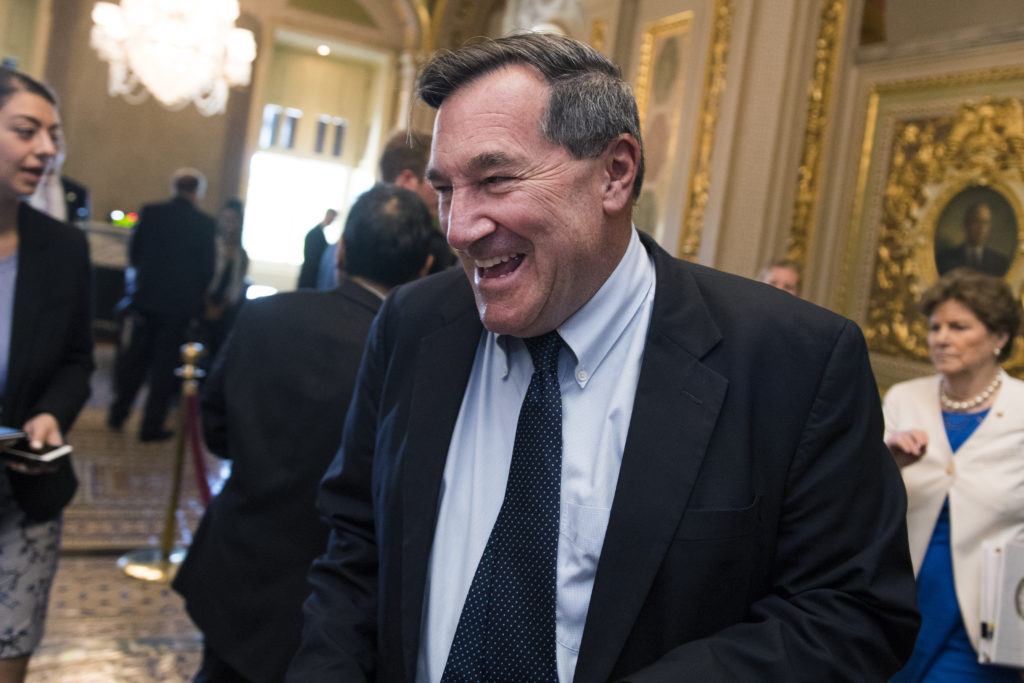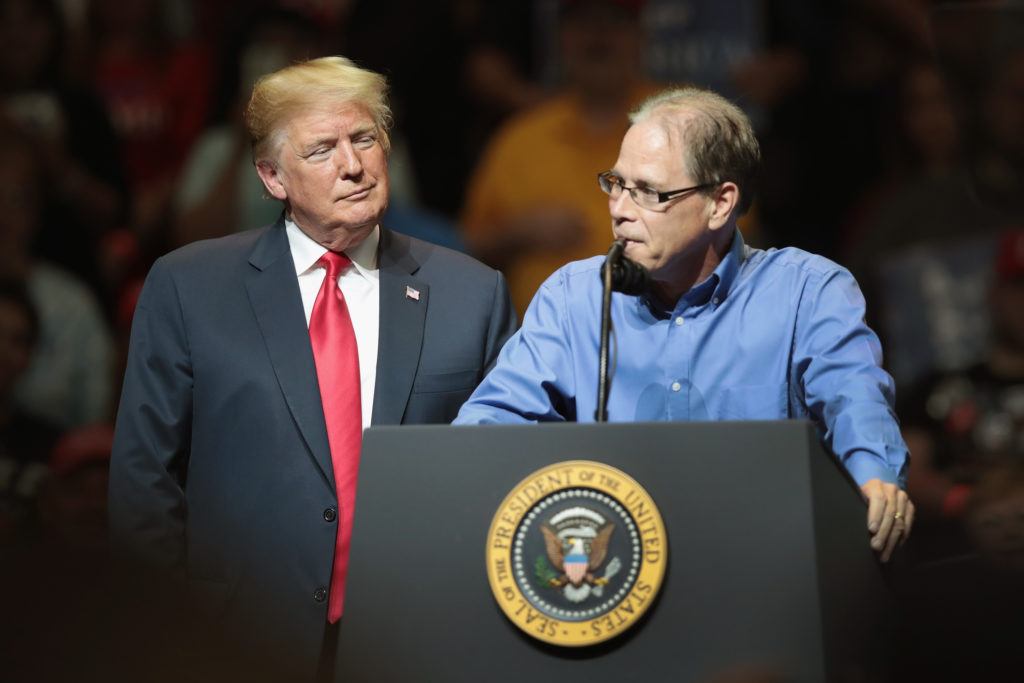Anti-Trump feeling from suburban woman could swing the Indiana midterm vote. Photo: Flickr/Google Images

For the Democrats to have any chance of capturing a Senate majority in next week’s midterms, they need to hold on to a number of seats in states carried by Donald Trump in 2016. One of those is Indiana, my home state. Normally you might expect the Republicans to win comfortably in this conservative corner of the country. Instead, we are on a knife-edge; one mistake could prove potentially decisive. No wonder Trump has decided to hold a rally here on the eve of polling day.
Indiana is one of those Midwestern “flyover” states that gets overlooked by folks on the US coasts and is entirely unknown to people overseas. Lying to the southeast of Chicago, Indiana is best known for basketball and the Indianapolis 500 auto race, its farmland (primarily corn and soybeans), and three big universities, Indiana, Purdue and Notre Dame.
Like its neighbouring states to the east and west, Indiana’s demographics are best understood by dividing the state horizontally into thirds. Southern Indiana grew first, with a gradual influx from slave-holding states (particularly Kentucky, including a young Abraham Lincoln who came north with his family and spent his formative years in Indiana). Then the middle part of the state welcomed settlers from middle-Atlantic states like Maryland and Pennsylvania. The northern third followed, with settlers from upstate New York and New England, and in the mid-1800s it started seeing many immigrants arriving from Germany, Poland, Ireland and other European countries.
These early settlement patterns are still reflected in Indiana’s politics. Southern Indiana has a strong “southern state” conservative and evangelical Christian feel, while northern Indiana shows a stronger ethnic, Catholic influence. Much of the state’s population and power structure is based in central Indiana, particularly in the capital city of Indianapolis and the counties surrounding it.
Today, Indiana is about 81% non-Hispanic white, 9% African-American (living mainly in the larger urban areas), and 6% Hispanic. Manufacturing employment, traditionally related to the auto industry, is at 17%. Indiana has the most steel-producing plants in the country and also has a large presence in pharmaceuticals and medical devices. A Republican bastion since the Second World War, the state has supplied two recent vice-presidents: Dan Quayle (under George H.W. Bush) and the present one, Mike Pence.

Joe Donnelly, the Democrat incumbent, was elected Senator in 2012 in what most observers saw as a fluke. The well-respected six-term incumbent, Richard G. Lugar, had been beaten in the Republican primary by State Treasurer Richard Mourdock, a favourite of the conservative “Tea Party”. While President Barack Obama carried Indiana in 2008 (only the second time a Democratic presidential nominee had done that since 1939), the Republican ticket was expected to do much better in 2012.
Two weeks before the election, however, Donnelly’s opponent ended a debate by saying that he opposed abortion even when a pregnancy resulted from rape, since “that is something that God intended to happen”. This statement stirred up enormous controversy and the race that many saw as slightly favouring the Republican, or as a toss-up, was won by Donnelly by about 6% – at the same time that Mitt Romney was beating Obama by 11%.
This year, Donnelly, a former congressman from the northern part of the state, is opposed by the Republican businessman and former state legislator Mike Braun, from southwestern Indiana. Since Donald Trump, and his running mate, Mike Pence, carried Indiana by 19% in 2016, most observers feel things should be promising for the Republicans this year.
Yet the race looks like a toss-up, with perhaps a small edge for Donnelly. There are a number of factors in play – beyond the standard nationwide issues and the level of support or opposition for Trump – that help to explain this close race.
What hurts Donnelly is the underlying strong Republican composition of the state. All but two of the nine congressional seats are held by them; they also have super-majorities in both houses of the Indiana legislature. Little change is anticipated with those races. Many Indiana residents are proud that the Vice-President comes from their state, and Pence has appeared in a positive television ad for Braun. The economy is perceived to be doing about as well as the rest of the country, there are no major scandals, and many voters seem to be content.
What helps Donnelly, paradoxically, is the underlying conservative bent in the state: people don’t like to make too many changes too quickly, and Donnelly is perceived as a middle-of-the-road office-holder. No Indiana Senator has lost a November general election since 1980, when Dan Quayle was successful. Similarly, no incumbent elected Indiana governor has lost a November election since the office was changed from having a one-term limit to a two-term limit in 1972. Moreover no incumbent congressperson has been defeated for re-election in November since 2010.

Another factor likely to help Donnelly is the divisive Republican primary in May where Braun, with 41% of the vote, beat two incumbent congressmen who ended up with 30 and 29. It can be difficult to bring everyone together after a close three-way race. Hard feelings mean that frustrated donors and volunteers reluctant to step up for the winning opponent take time to come around. In contrast, there was no primary challenge to Donnelly this year.
There has been a lot of outside money spent in the Indiana Senate race and it is often hard to figure out who is saying what and who is paying for that message. Television ads attack opponents for their connections with foreign countries. The Republicans call Donnelly “Mexico Joe” because his family apparently moved some business operation to Mexico sometime in the past. The Democrats attack Braun because his company apparently buys some parts from China – and has pages in Chinese on its website.
Donnelly has emphasised his independence, voting with Trump when he thinks that’s the right thing to do, and against him when it’s not. He voted for Trump’s first Supreme Court nominee and against the second, Brett Kavanaugh. This is consistent with Donnelly’s approach in the past to other issues. After the Sandy Hook gun massacre, he voted for more background checks on gun purchasers but against restrictions on “assault weapons”. His closing television ad showing him splitting wood is meant to show how he splits his support. Braun has countered with an ad showing Donnelly as a strip mall balloon figure, blowing first one way and then the other.
So who will win? My sense is that while many Indiana voters still support much of what Trump has done, they won’t be motivated to vote out someone who comes across as a moderate willing to check Trump when necessary. Combine this with expected increases in turn-out by young people and heightened anti-Trump feelings from suburban women and Donnelly should be able to gain a narrow win.
It will take a lot more to give control of the Senate to the Democrats, but this is one of the seats they cannot afford to lose.










Join the discussion
Join like minded readers that support our journalism by becoming a paid subscriber
To join the discussion in the comments, become a paid subscriber.
Join like minded readers that support our journalism, read unlimited articles and enjoy other subscriber-only benefits.
Subscribe